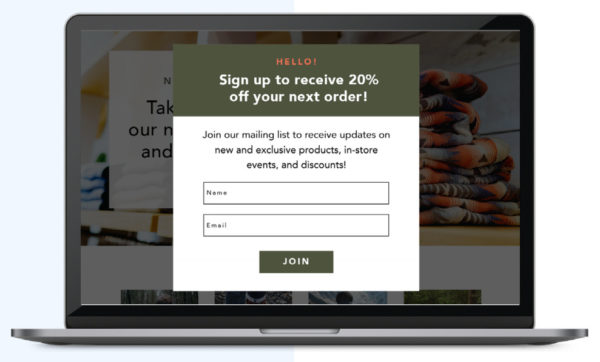
Do you ever open your inbox and spend the next 30 minutes unsubscribing and deleting marketing emails that are either of no interest or clearly aren’t relevant to you?
I know I have.
Email marketing is one of the most powerful tools for increasing brand awareness, getting more sales, and building customer loyalty. However, the days of one-size-fits-all content are long gone.
Today, consumers expect personalized, relevant content. That means to be effective, you have to send the right content to the right people at the right time.
Enter email segmentation. Email segmentation “allows you to organize your contacts into different groups so that you can send targeted emails that are more relevant to the reader’s needs and interests.”
And segmented emails deliver transaction rates that are six times higher than non-personalized emails.
In this post, we’re going to dive deeper into how you can build your email lists, what data to collect, and how to effectively segment your lists and automate your campaigns to get higher open and click-through rates (and more sales).
Building your contact list
Before you can start segmenting your list, you need to have email subscribers. Here are a few ideas to get your first subscribers:
- Ask your network (i.e., friends, family, colleagues, etc.).
- Invite people to sign up on your social media channels.
- Include an option to sign up on your website’s checkout page.
- Invite people to sign up at your store (if applicable).
You can also build out email opt-ins, like a newsletter, and lead magnets, such as quizzes, whitepapers, and e-books, as a way to incentivize more people to subscribe.
Once you have created a compelling reason for why someone should join your email list, you are ready to build a sign-up form to capture those leads.
A simple online form can be an effective tool for collecting lead information. There are a variety of tools that you can use. One example is JotForm which can help you quickly gather email subscriber information from your website, blog, social media channels, etc.
You can use this tool through the web or on your mobile device with the new JotForm Mobile Forms app. And JotForm automatically integrates directly with Constant Contact’s email segmentation tool to funnel leads into the correct campaign for seamless segmentation.
Collecting email subscriber data
When it comes to collecting subscriber data on your sign-up forms, it’s important to keep the form simple and quick to complete (i.e., less than 30 seconds), but still collect enough information to deliver relevant and personalized information.
A good rule of thumb is to write down every data point that you want to know on a piece of paper. Put it aside for at least an hour. Then clean that email list up and leave only the essentials.
You should always collect the following information from new subscribers through your sign-up form:
- Name
- Email address
- Sign-up source (which comes from the form automatically, without the subscriber having to fill it out).
Here is an example of a really simple email sign-up form:

If you’re a B2B company, such as a web development firm, IT software provider, or ad agency, some things you may want to know would be:
- Company name
- Company size
- Industry
- Estimated budget
- Job title
- Seniority
- How they heard about you
For example, if you run a SaaS business selling IT Software, you may want to know their subscriber’s name, email address, company name, their job title and their team size.
Here is a sample lead contact form for a business support services company:

If you’re a B2C company, such as a bakery or salon you may want to know things like:
- Where they are located
- Age
- Gender
- Birthday
- Shipping address (if they’re buying stuff from you)
- Billing address (if they’re buying stuff from you)
- How they heard about you
- If they have referred anyone
- If they have left an online review
Here’s an example of a simple form for a salon:

Use subscriber data for email segmentation
Now that you have a lot of great data about your subscribers, you can use it to deliver targeted campaigns. There are many different ways that you can slice and dice your list to send relevant information to subscribers, including but not limited to:
- Gender
- Geography/location
- Job title
- Company
- Birthday
It can be really tempting to go overboard and start creating dozens of segments all at once. However, this is a quick way to get overwhelmed. Instead, create a couple of key segments and ask yourself how they differ from one another. Then, draft campaigns that speak to the unique characteristics of the particular segment. Below are a couple of ideas of how you can leverage the data you have collected.
Regional sales campaign
Are you a retail establishment with multiple store locations? One of the most popular campaigns to run is for store discounts. If you collect subscribers’ locations on your sign-up form (or simply look up their IP address in your email marketing platform), you can send them discounts and special offers for a specific store. By only sending to subscribers who live near this store, your email will be more relevant and will generate higher open and click-through rates.
Industry-specific campaign
If you collect job titles and/or industries in your signup form, you can run a bunch of useful campaigns. For example, imagine you run an e-commerce business selling hair, makeup, and skincare products to hair salons, professional makeup artists (B2B) and everyday consumers (B2C). You can run separate campaigns for each audience. For the wholesalers, you might promote a particular brand when purchased in bulk, while for the consumers you might run a time-limited discount. By segmenting your audiences and targeting the messages, you make your emails more relevant, and compelling.
Use subscriber data for email automation
The data that you collect on your forms can be useful beyond segmentation. You can also use the information to trigger automated campaigns. This is especially helpful with date-based emails like birthday, anniversary or welcome messaging.
Automated birthday emails
Did you know that birthday emails — even automated ones — generate 342 percent more revenue than other emails?
If you collect subscribers’ birthday information on your sign-up form, it’s really easy to send them an automated email in Constant Contact right before or on their birthday. For example, if you own a cupcake shop, you can send a happy birthday email with a 20-percent discount to loyal customers on their birthdays.
Need some inspiration? There are lots of celebratory templates right in your Constant Contact account.

Automated welcome campaigns
I’m always surprised when I sign up to an email list, and I don’t get a welcome email, or better yet, an automated welcome email series.
One of the best ways to get and keep someone engaged with your list is by sending them an email thanking them and delivering value right out of the gate. Set the trigger as the date that someone signs up via your form.
Here’s one great example which delivers a discount code for having subscribed to the list.

Pro tip: This also helps to keep your emails out of the dreaded spam folder.
Amp up your email marketing with organized data collection
In sum, good data is the basis for great email marketing. In order to be successful, you should think about what type of data will be most important to know about your audience and then create simple forms to capture the information. Then, segment your list and create targeted email campaigns to send the right content to the right people at the time — when they are most likely to be receptive to it. And, don’t forget to track the results.




